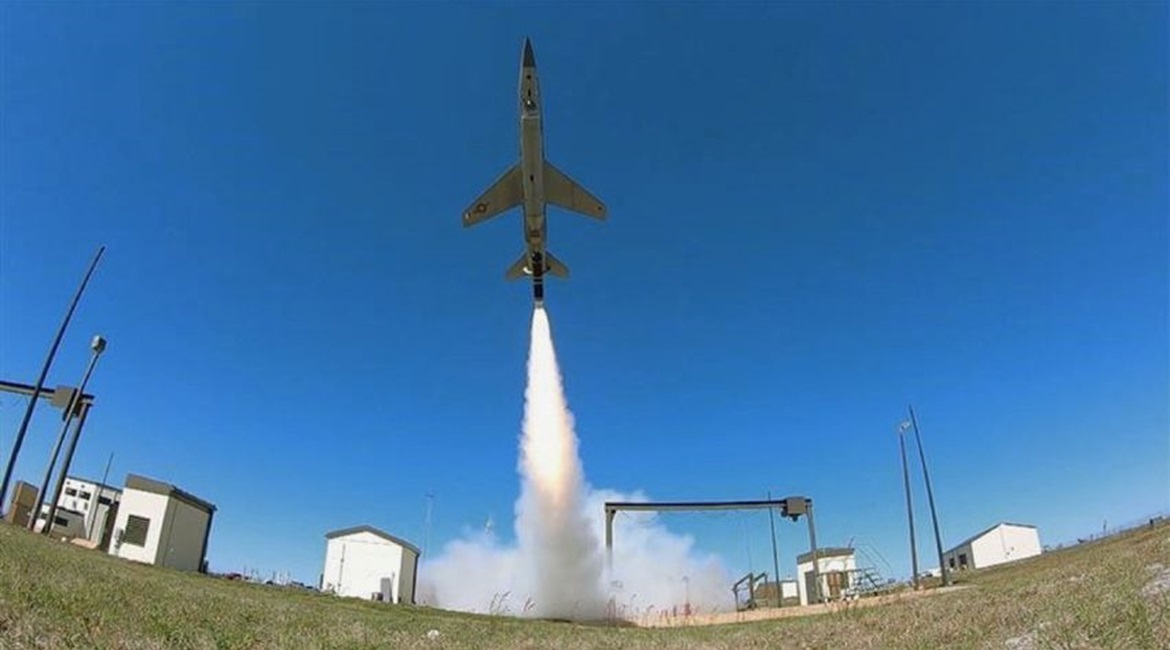
The US Air Force’s (USAF’s) Skyborg Vanguard team has completed initial flight tests of the Skyborg autonomy core system (ACS) aboard a Kratos Unmanned Systems Division UTAP-22 Mako tactical unmanned aerial vehicle (UAV).
Under Milestone 1 of the Autonomous Attritable Aircraft Experimentation (AAAx) campaign, the ACS performed a series of foundational behaviours necessary to characterise safe system operation. Three flight tests were conducted from Tyndall Air Force Base, Florida, between 29 April and 5 May.

The first test flight of the ACS-configured UTAP-22 occurred on 29 April. (AFRL)
The goal of the Skyborg programme is to develop and integrate full-mission autonomy with low-cost, attritable UAV technology to enable manned-unmanned teaming. The Skyborg Vanguard team pairs the Program Executive Officer for Fighters and Advanced Aircraft as the Skyborg Program Executive Officer and the Commander of the Air Force Research Laboratory (AFRL) as the Skyborg Technology Executive Officer. The 96th Test Wing serves as the executing agent for test missions.
The UTAP-22 is a high-performance tactical UAV derived from the Kratos-developed BQM-167A aerial target. The modified UTAP-22 variant used for the AAAx Milestone 1 testing exhibits a revised intake and what appears to be a sensor package.
The first UTAP-22 flight test on 29 April lasted two hours and 10 minutes. According to the AFRL, the ACS “demonstrated basic aviation capabilities and responded to navigational commands, while reacting to geo-fences, adhering to aircraft flight envelopes, and demonstrating co-ordinated manoeuvring”. The test was monitored from both airborne and ground command-and-control stations.
Looking to read the full article?
Gain unlimited access to Janes news and more...




